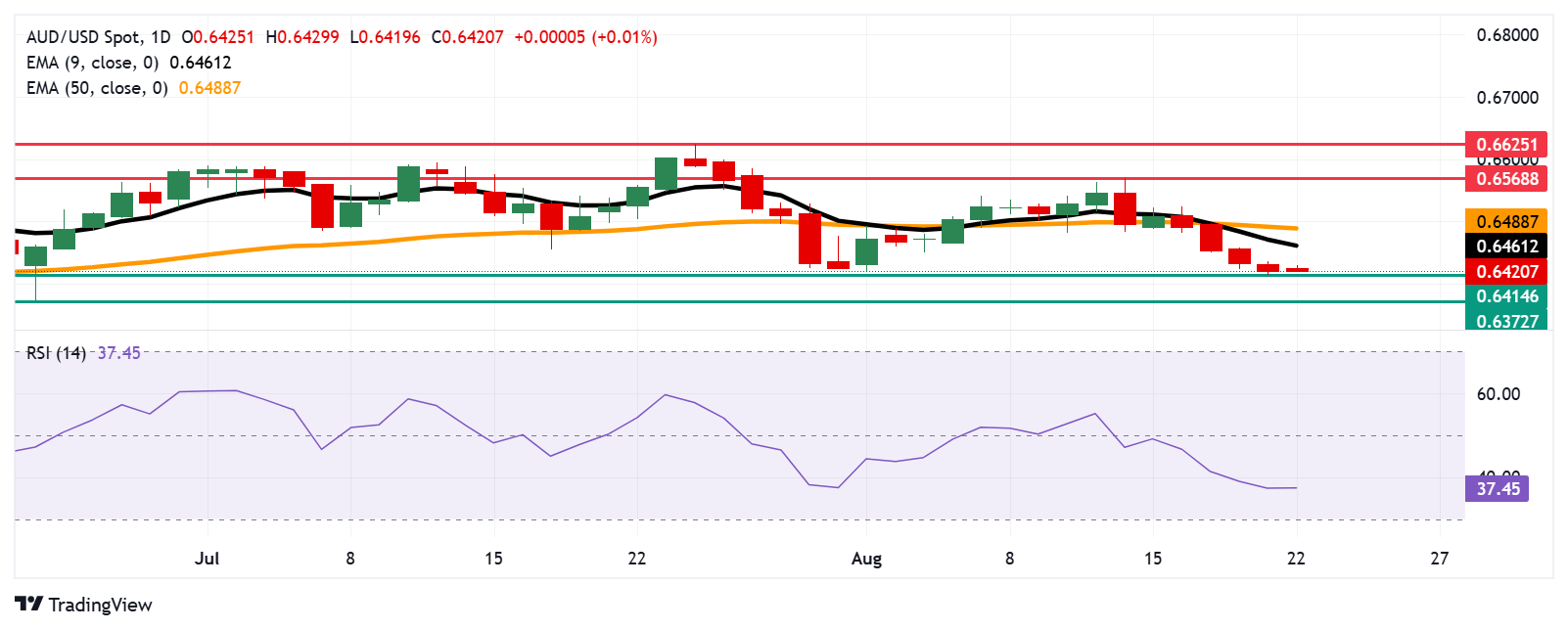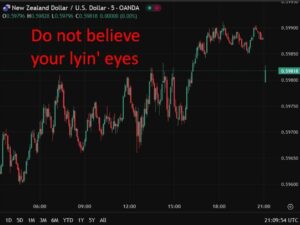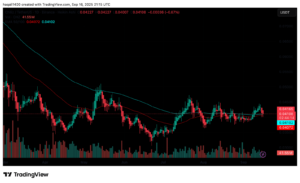Australian Dollar moves sideways as US Dollar steadies ahead of Powell’s speech

- The Australian Dollar maintains its position near the two-month low of 0.6414 recorded on Thursday.
- AUD/USD came under pressure as the US Dollar strengthened following upbeat S&P Global US PMI data.
- The CME FedWatch Tool indicates that markets are pricing a 74% chance of a September rate cut, down from 82% on Wednesday.
The Australian Dollar (AUD) steadies near a two-month low at 0.6414 after registering losses in the previous four consecutive days. However, the AUD/USD pair lost ground as the US Dollar (USD) gained ground after the upbeat S&P Global US Purchasing Managers’ Index (PMI) data was released on Thursday. The AUD also received downward pressure as Consumer Inflation Expectations rose 3.9% in August, coming in below the previous increase of 4.7%.
The preliminary S&P Global US Composite PMI picked up pace in August, with the index at 55.4 versus 55.1 prior. Meanwhile, the US Manufacturing PMI rose to 53.3 from 49.8 prior, surpassing the market consensus of 49.5. Services PMI eased to 55.4 from 55.7 previous reading, but was stronger than the 54.2 expected.
Traders expect the Reserve Bank of Australia (RBA) to remain cautious after last week’s rate cut. However, investors anticipate that the central bank may resume easing with a larger 50 basis-point rate cut, likely in November.
Australian Dollar loses ground as US Dollar steadies ahead of Powell’s speech
- The US Dollar Index (DXY), which measures the value of the US Dollar against six major currencies, is holding ground after registering gains in the previous session and trading around 98.60 at the time of writing. Traders await Fed Chair Jerome Powell’s speech at the Jackson Hole Symposium in Wyoming to gain clues on the September policy outlook.
- US Initial Jobless Claims rose to 235K for the previous week, an eight-week high and above the consensus estimate of 225K, suggesting some softening in labor market conditions.
- Strong PMI data paired with rising jobless claims highlights the Federal Reserve’s challenge of weighing persistent inflation pressures against evidence of a softening labor market. According to the CME FedWatch tool, Fed funds futures traders are now pricing in a 74% chance of a rate reduction in September, down from 82% on Wednesday.
- The Federal Open Market Committee’s (FOMC) Minutes for the July 29-30 meeting indicated that most Federal Reserve (Fed) officials emphasized that inflation risks outweighed labor market concerns during last month’s meeting, as tariffs deepened divisions among policymakers. Most policymakers considered it appropriate to maintain the benchmark interest rate in the 4.25%–4.50% range.
- White House press secretary Karoline Leavitt announced on Tuesday that plans for a bilateral meeting between Russian President Vladimir Putin and Ukrainian President Volodymyr Zelenskyy are now underway, according to CNN.
- US Treasury Secretary Scott Bessent said late Monday that the talks between the United States (US) and China are going well, adding that he expects US growth to pick up in the fourth quarter (Q4). Bessent further noted that the current arrangement with China is highly effective, as the country remains the largest contributor to tariff revenue.
- Australia’s S&P Global Manufacturing PMI came in at 52.9 in August, against 51.3 prior. Meanwhile, Services PMI rose to 55.1 from the previous reading of 54.1. The Composite PMI improved to 54.9 from 53.8 previously.
- Australia’s Westpac Consumer Confidence surged 5.7% in August to 98.5, following a 0.6% increase in July. The consumer sentiment has reached a high since February 2022, as the Reserve Bank of Australia (RBA) has delivered rate cuts totaling 75 basis points since January.
- Matthew Hassan, Head of Australian Macro-Forecasting, said the prolonged period of consumer pessimism may be coming to an end, although maintaining momentum could require additional easing. However, he emphasized that policymakers are under no immediate pressure to deliver further cuts.
- The Reserve Bank of Australia (RBA) delivered a 25 basis points (bps) interest rate cut on Tuesday, as widely expected, bringing the Official Cash Rate (OCR) to 3.6% from 3.85% at the August policy meeting.
Australian Dollar maintains position near two-month lows above 0.6400
The AUD/USD pair is trading around 0.6420 on Friday. The short-term price momentum is weaker as technical analysis on the daily chart indicates that the pair remains below the nine-day Exponential Moving Average (EMA). Additionally, the 14-day Relative Strength Index (RSI) is positioned below the 50 level, indicating a bearish market bias.
On the downside, the AUD/USD pair could target the two-month low of 0.6414, recorded on August 21, followed by the three-month low of 0.6372, reached on June 23.
The AUD/USD pair could target the primary barrier at the nine-day EMA of 0.6461, followed by the 50-day EMA at 0.6488. A break above these levels could improve the short- and medium-term price momentum and prompt the AUD/USD pair to target the monthly high at 0.6568, reached on August 14, followed by the nine-month high of 0.6625, which was recorded on July 24.
AUD/USD: Daily Chart

Australian Dollar Price Today
The table below shows the percentage change of Australian Dollar (AUD) against listed major currencies today. Australian Dollar was the strongest against the Swiss Franc.
| USD | EUR | GBP | JPY | CAD | AUD | NZD | CHF | |
|---|---|---|---|---|---|---|---|---|
| USD | 0.01% | -0.00% | 0.15% | 0.00% | -0.04% | 0.00% | 0.16% | |
| EUR | -0.01% | 0.02% | 0.10% | 0.01% | -0.09% | 0.00% | 0.17% | |
| GBP | 0.00% | -0.02% | 0.10% | -0.00% | -0.09% | 0.00% | 0.15% | |
| JPY | -0.15% | -0.10% | -0.10% | -0.14% | -0.18% | -0.21% | -0.04% | |
| CAD | -0.00% | -0.01% | 0.00% | 0.14% | -0.10% | 0.00% | 0.16% | |
| AUD | 0.04% | 0.09% | 0.09% | 0.18% | 0.10% | 0.11% | 0.26% | |
| NZD | -0.01% | -0.01% | -0.00% | 0.21% | -0.00% | -0.11% | 0.16% | |
| CHF | -0.16% | -0.17% | -0.15% | 0.04% | -0.16% | -0.26% | -0.16% |
The heat map shows percentage changes of major currencies against each other. The base currency is picked from the left column, while the quote currency is picked from the top row. For example, if you pick the Australian Dollar from the left column and move along the horizontal line to the US Dollar, the percentage change displayed in the box will represent AUD (base)/USD (quote).
RBA FAQs
The Reserve Bank of Australia (RBA) sets interest rates and manages monetary policy for Australia. Decisions are made by a board of governors at 11 meetings a year and ad hoc emergency meetings as required. The RBA’s primary mandate is to maintain price stability, which means an inflation rate of 2-3%, but also “..to contribute to the stability of the currency, full employment, and the economic prosperity and welfare of the Australian people.” Its main tool for achieving this is by raising or lowering interest rates. Relatively high interest rates will strengthen the Australian Dollar (AUD) and vice versa. Other RBA tools include quantitative easing and tightening.
While inflation had always traditionally been thought of as a negative factor for currencies since it lowers the value of money in general, the opposite has actually been the case in modern times with the relaxation of cross-border capital controls. Moderately higher inflation now tends to lead central banks to put up their interest rates, which in turn has the effect of attracting more capital inflows from global investors seeking a lucrative place to keep their money. This increases demand for the local currency, which in the case of Australia is the Aussie Dollar.
Macroeconomic data gauges the health of an economy and can have an impact on the value of its currency. Investors prefer to invest their capital in economies that are safe and growing rather than precarious and shrinking. Greater capital inflows increase the aggregate demand and value of the domestic currency. Classic indicators, such as GDP, Manufacturing and Services PMIs, employment, and consumer sentiment surveys can influence AUD. A strong economy may encourage the Reserve Bank of Australia to put up interest rates, also supporting AUD.
Quantitative Easing (QE) is a tool used in extreme situations when lowering interest rates is not enough to restore the flow of credit in the economy. QE is the process by which the Reserve Bank of Australia (RBA) prints Australian Dollars (AUD) for the purpose of buying assets – usually government or corporate bonds – from financial institutions, thereby providing them with much-needed liquidity. QE usually results in a weaker AUD.
Quantitative tightening (QT) is the reverse of QE. It is undertaken after QE when an economic recovery is underway and inflation starts rising. Whilst in QE the Reserve Bank of Australia (RBA) purchases government and corporate bonds from financial institutions to provide them with liquidity, in QT the RBA stops buying more assets, and stops reinvesting the principal maturing on the bonds it already holds. It would be positive (or bullish) for the Australian Dollar.



